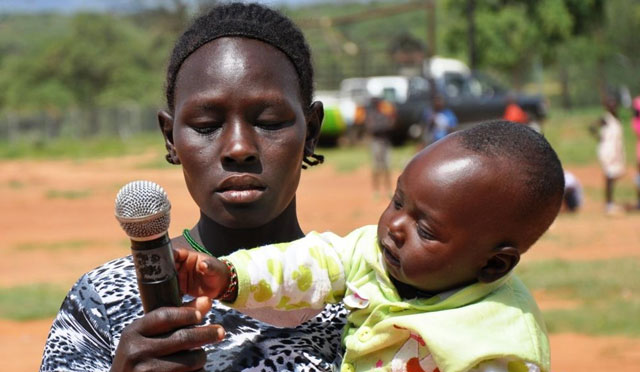
Amudat, Uganda | THE INDEPENDENT | Tegla Chepolukuma was 13-years- old when her friends advised her to go for Female Genital cutting alias Female Genital Mutilation. She recalls how her peers kept counting the days to the D– day.
“When that day reached I remember it was on Wednesday, my grandmother arrived at our home in Kalas to cut us and my grandmother coaxed me and told me not to worry. My grandmother told me it was important I go through the rite in order to become a respectable woman and increase my chances of getting married. Someday,” he said.
Adding that, “I closed my eyes tight and tried to gather courage. I wanted to dodge but my grandmother and another woman held me down.” Tegla does not wish to recall or talk about the event of that day.
“The memory is too painful,” she told URN in an interview. She explained told URN in Amudat that going through Female Genital Mutilation (FGM) is a matter between life and death. Her sister, Rose Cheptak had the procedure done before her and bled to near death. According to Tegla, she took a full month to recover after the cutting and was married off.
However, her husband chased her away because she couldn’t conceive as a result of the cutting yet the man and his relatives wanted children.
“I came back home and stayed for about one year, while at home I got a message from Transcultural Physical Organization (TPO), an NGO which was funded by UNFPA calling girls who were cut to be taken for reconstruction. I didn’t believe I would get back to my normal life; the team from TPO took me to Mbale Regional Referral Hospital where I was reconstructed,” she said.
Adding that, “I thank God I was reconstructed and shortly conceived my firstborn,” a smiling Tegla said while carrying her baby. Many other girls have got similar experiences like Tegla. Jeros Odyambo, the program officer of TPO who was also involved in ensuring that Tegla gets reconstruction surgery told URN in his Amudat office that the exercise was financed by UNFPA.
“This is the reason why this bad practise should be fought seriously,” he said.
About FGM
Female genital mutilation or cutting (FGM/C) is defined by the World Health Organization as all procedures that involve partial or total removal of the external female genitalia. It also involves any other injury to the female genital organs for non-medical reasons. FGM/C is a millennia-long custom that practicing communities believe is an essential part of raising a girl properly.
According to World Health Organization (WHO) about 140 million girls and women worldwide are currently living with the consequences of FGM/C. Some 92 million girls of 10 years and above who have undergone the practice are in Africa.
Health consequences
Dr. Patrick Sagaki, the Medical Superintendent of Amudat hospital told URN that the practice has several immediate and long-term health consequences. He says many women like Tegla suffer for years after being circumcised because of scarring and frequent infections.
Several organizations in Uganda are fighting to end the practice that is mainly practiced Karamoja, Pokot and Sebei. In 2010, the Uganda government passed a law criminalizing FGM. Those found guilty of involving in FGM face life imprisonment.
********
URN
 The Independent Uganda: You get the Truth we Pay the Price
The Independent Uganda: You get the Truth we Pay the Price


